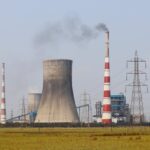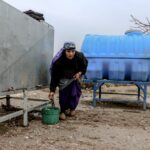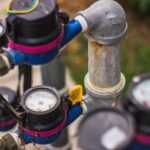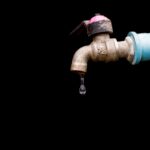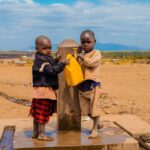Water Infrastructure in West Africa – What Needs to Improve?
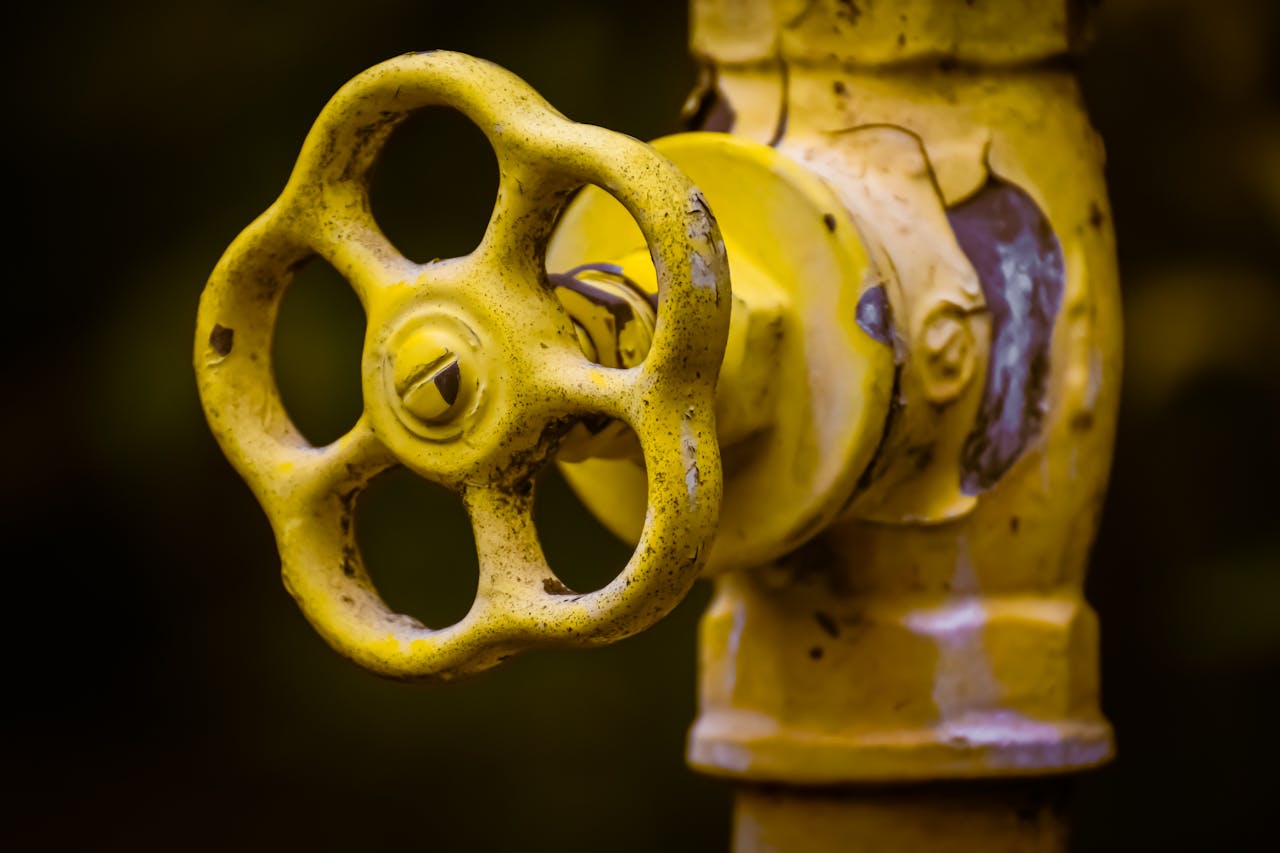
West Africa’s water infrastructure tells a story of contrast. In cities like Lagos in Nigeria and Accra in Ghana, some areas enjoy constant water flow while others go weeks without a drop from public pipes. This gap shows the real state of our water systems.
Only 2 in 5 Africans lack safely managed drinking water. In rural areas, this drops to 4 in 5. Beyond these numbers lie daily struggles – mothers waking at dawn to fetch water, businesses spending extra on private boreholes, and hospitals struggling with unreliable supply.
The economic cost hits hard. Workers lose hours queuing for water, businesses spend more on private solutions, and governments lose revenue through broken systems. Meanwhile, the region’s population grows faster than new infrastructure, widening the gap between need and supply.
Existing Infrastructure Overview
West Africa’s water infrastructure tells a story of colonial legacy mixed with modern challenges. In major cities in West Africa, the backbone of water systems dates back to colonial times. These ageing systems, designed for populations a fraction of their current size, struggle to meet today’s demands. Large treatment plants, built decades ago, operate well beyond their intended capacity, leading to frequent breakdowns and inconsistent water quality.
The urban-rural divide in infrastructure presents stark contrasts. While cities grapple with ageing systems, rural areas often lack basic infrastructure entirely. Many villages rely on single water points – maybe a borehole or a well – serving hundreds or even thousands of people. When these systems fail, entire communities face water scarcity. The few existing rural treatment facilities usually operate at basic levels, often as just chlorination points rather than comprehensive treatment plants.
Storage presents another critical challenge. Urban areas have a mix of large municipal tanks, many in disrepair, alongside private storage solutions. Households and businesses invest heavily in personal storage tanks, creating a similar water infrastructure that compensates for irregular public supply. In rural areas, storage often means simple concrete tanks or traditional clay pots, leaving communities vulnerable during dry seasons or system breakdowns.
Key Challenges
The challenges facing West Africa’s water infrastructure run deep and are interconnected. Population growth in urban areas surpasses infrastructure development at an alarming rate. In some big cities, new neighborhoods spring up monthly, but water infrastructure lags years behind. This creates a perpetual game of catch-up, where even new systems become overwhelmed shortly after completion.
Maintenance presents perhaps the most pressing daily challenge. Across the region, broken pumps, leaking pipes, and failing treatment equipment wait months or years for repair. The reasons go beyond simple neglect – spare parts often must be imported at high cost, technical expertise is scarce, and maintenance budgets are inadequate. When repairs do happen, they’re often temporary fixes rather than lasting solutions.
Power supply problems compound these issues. Irregular electricity supply means water pumps work sporadically, leading to unpredictable supply patterns. While some facilities have generators, the cost of fuel often exceeds budget allocations. Solar solutions show promise but require significant initial investment that many water authorities cannot afford.
Resource Management Issues
Water loss through leakage represents one of the most serious resource management challenges in West Africa.
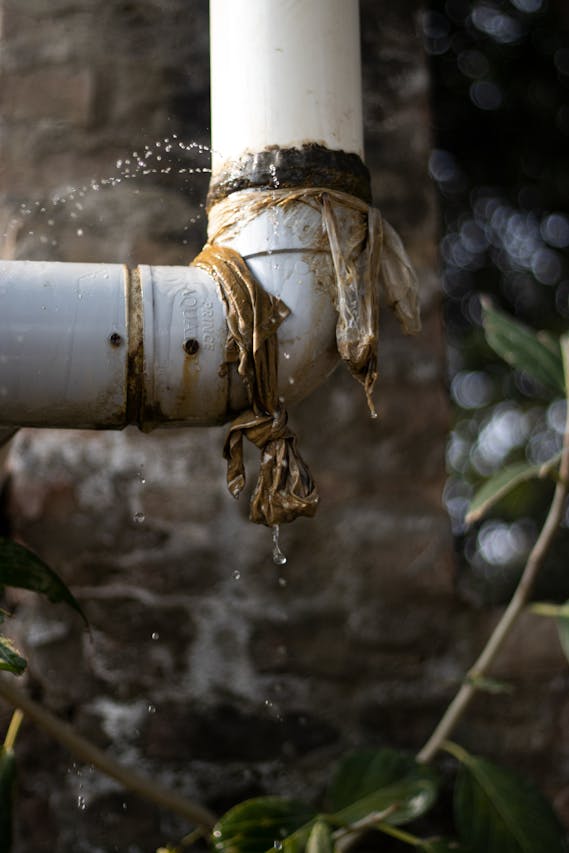
In many cities, up to half the treated water never reaches consumers, lost through leaking pipes, illegal connections, and poor pressure management. This massive waste not only represents lost revenue, but also squanders energy and treatment chemicals used to process the water.
Quality control suffers from both technical and management limitations. Many treatment plants lack modern testing equipment, relying on basic methods that might miss serious contamination. Even when problems are detected, the response often comes too late to prevent public health issues. The situation worsens during rainy seasons when turbidity increases and treatment becomes more challenging.
Distribution networks often create unintended inequities. Areas far from treatment plants or at higher elevations receive weak flow or no water at all, while areas near plants might have excess pressure leading to waste and pipe damage. Without proper monitoring and control systems, managing these imbalances becomes nearly impossible.
Financial Constraints
The financial reality of water infrastructure in West Africa reveals a complex cycle of inadequate funding and lost revenue. Government budgets typically prioritize new construction over maintenance, leading to a false economy where systems deteriorate faster than necessary. When emergencies occur, repairs cost far more than preventive maintenance would have.
Revenue collection poses significant challenges. Many public water authorities operate with collection rates below 50%, meaning they recover less than half the cost of providing water. Illegal connections, meter tampering, and simple non-payment all contribute to this problem. For example, in a typical Nigerian city, power cuts stop water pumps, causing supply interruptions. People then damage pipes to access water directly, leading to more leaks and less revenue.
The resulting lack of funds leads to poor service, which in turn makes customers less willing to pay, continuing the cycle. Investment in water infrastructure requires massive capital that most West African governments struggle to provide. While international donors and development banks offer support, the need far exceeds available funding. Private investment remains limited, deterred by uncertain returns and regulatory challenges.
Technical Limitations
The technical capacity gap in West Africa’s water sector runs deeper than ageing infrastructure. Most systems rely on outdated technology that wastes energy and provides poor service. Simple innovations like automatic pump controls or basic leak detection systems remain rare. When newer technology is installed, it often fails due to lack of local expertise for maintenance and repair.
Data collection and monitoring systems show particular weakness. Many water authorities still rely on paper records and manual readings, making it impossible to respond quickly to problems or plan effectively. Modern SCADA systems, common in other parts of the world, remain rare in West Africa. When they are installed, they often fall into disuse due to maintenance challenges.
Human Resource Gaps
The shortage of skilled water professionals threatens the future of water infrastructure in West Africa. Experienced engineers and technicians regularly leave for better opportunities abroad or in private sector jobs. Those who remain often work with limited resources and support, making it difficult to maintain high standards. Training programs exist but struggle to keep pace with technological changes and growing needs.
Knowledge transfer poses a particular challenge. As experienced staff retire or leave, their understanding of local systems often goes with them. Poor documentation means new staff must learn through trial and error. This leads to repeated mistakes and inefficient solutions to recurring problems. While some organizations attempt to create mentorship programs, the rapid turnover of staff makes these efforts difficult to sustain.
Environmental Factors
Nature does have it’s own effects on our water systems:
Climate Impact
- Changing rainfall patterns
- Longer dry seasons
- Flood damage
- Source depletion
- Treatment challenges
Source Problems
- Rivers drying up
- Groundwater dropping
- Pollution increasing
- Saltwater intrusion
- Contamination risks
Disaster Effects
- Flood damage to pipes
- Erosion problems
- Storm impacts
- System failures
- Recovery costs
Seasonal Issues
- Dry season shortages
- Wet season floods
- Quality changes
- Supply variations
- Demand spikes
Policy Framework
Rules and regulations need work:
Current Rules
- Outdated laws
- Unclear standards
- Mixed responsibilities
- Weak enforcement
- Poor coordination
Implementation
- Limited resources
- Political interference
- Corruption issues
- Slow processes
- Poor monitoring
Regional Issues
- Different standards
- Limited cooperation
- Border challenges
- Resource sharing
- Planning gaps
Private Sector Role
Business can help improve systems:
Investment Options
- Equipment supply
- Service contracts
- Management deals
- Technical support
- Innovation funding
Partnership Models
- Service agreements
- Build-operate-transfer
- Management contracts
- Joint ventures
- Community partnerships
Innovation Areas
- Payment systems
- Leak detection
- Quality monitoring
- Energy solutions
- Distribution methods
Community Impact
Water problems affect daily life:
Access Issues
- Long collection times
- High costs
- Quality concerns
- Supply uncertainty
- Health risks
Economic Effects
- Business costs
- Lost work time
- Health expenses
- Reduced productivity
- Development limits
Social Impact
- Gender burden
- Education effects
- Health problems
- Community conflicts
- Migration pressure
Success Stories
Some solutions work well:
Working Examples
- Community-managed boreholes in Ghana
- Solar-powered systems in Senegal
- Payment innovations in Nigeria
- Village maintenance teams
- Women’s water committees
Innovative Approaches
- Mobile payments
- Solar pumping
- Community management
- Local manufacturing
- Training programs
Lessons Learned
- Community involvement matters
- Local solutions often work best
- Simple technology lasts longer
- Training needs priority
- Regular maintenance pays off
Take Ghana’s community water projects – local committees manage their own systems, collect fees, and handle repairs. This works better than waiting for distant authorities. In Senegal, solar-powered pumps cut electricity costs and provide reliable supply.
Nigerian communities show how mobile payments can improve fee collection. When people can pay water bills by phone, collection rates improve. Local maintenance teams fix problems quickly, cutting water loss and improving service.
These successes show that solutions exist. They might be simple – like training local technicians or forming water committees – but they work. When communities take charge and get proper support, water systems improve.
The key lies in matching solutions to local needs. What works in a big city might not work in a rural village. But principles like community involvement, regular maintenance, and appropriate technology apply everywhere.
Future Requirements
West Africa’s water future needs clear planning:
Infrastructure Needs
- New treatment plants
- Modern pipe networks
- Better storage systems
- Updated pumping stations
- Smart monitoring tools
Investment Scale
- Basic repairs need millions
- Major upgrades cost billions
- Training requires funding
- Technology investments
- Maintenance budgets
Technology Updates
- Digital payment systems
- Leak detection tools
- Quality monitoring equipment
- Automated controls
- Mobile reporting systems
Capacity Building
- Technical training programs
- Management skills
- Community education
- Local maintenance teams
- Professional development
Recommended Actions
Moving forward requires clear steps:
Immediate Priorities
- Fix major leaks
- Repair critical equipment
- Train local technicians
- Improve fee collection
- Protect water sources
Long-term Plans
- Build new infrastructure
- Develop funding sources
- Strengthen communities
- Update policies
- Improve management
Organizations like AquaMaya show how partnering with communities creates lasting solutions. Their work proves that combining local knowledge with technical expertise brings better results than either approach alone.
Implementation Steps
- Start with urgent repairs
- Build community support
- Train local teams
- Monitor progress
- Share success stories
Action Areas
- Government commitment
- Community involvement
- Private sector support
- Technical assistance
- Regular evaluation
Conclusion
To conclude, let’s look at the following Key Points:
- Infrastructure needs urgent attention
- Solutions exist and work
- Communities play vital roles
- Investment brings returns
- Everyone has a part
Future Outlook
- Growing water needs
- Climate change challenges
- Technology opportunities
- Community potential
- Partnership importance
Path Forward
Success needs everyone working together – governments providing support, communities taking charge, and NGOs like AquaMaya bringing expertise and resources. Simple solutions often work best. For example, training local technicians, forming water committees, and using appropriate technology.
Action Steps
- Support working solutions
- Build on local knowledge
- Use proven methods
- Strengthen communities
- Monitor progress
Looking ahead, West Africa’s water infrastructure can improve. We have examples that work, communities ready to help, and solutions that fit local needs. The challenge isn’t finding solutions but putting them into action.
Real change starts with small steps – fixing leaks, training people, and building community support. When these basic elements work, bigger improvements follow. Success comes from matching solutions to local needs, supporting community leadership, and providing the right resources at the right time.
The future of West Africa’s water infrastructure depends on today’s choices. We can fix broken systems, build better ones, and ensure everyone has reliable water access. This takes commitment, resources, and cooperation, but the results, like healthier communities, stronger economies, and better lives, make it worth the effort.
So the question is not whether we can improve West Africa’s water infrastructure, but how quickly we will act to make these improvements happen. The solutions exist. The communities are ready. The time to act is now.
Sources:
- https://www.mdpi.com/2073-4441/13/17/2416
- https://sustainabledevelopment.un.org/content/documents/hlpwater/08-WaterInfrastInvest.pdf
- https://www.unicef.org/senegal/en/press-releases/africa-drastically-accelerate-progress-water-sanitation-and-hygiene-report
- https://www.esi-africa.com/industry-sectors/water/senegal-farmers-harnessing-solar-energy-to-water-crops-all-year/
- https://punchng.com/fg-unveils-advanced-scada-technology-for-national-grid
- https://documents1.worldbank.org/curated/ru/731141488368322337/pdf/113075-Revised-PUBLIC-W16010-eBook.pdf


